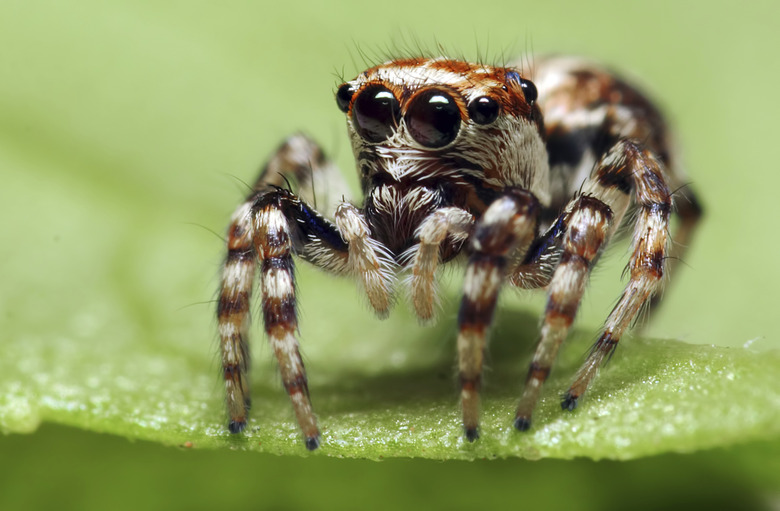Common Spiders In South Africa
South Africa is home to over 3,000 known species of spiders. Though feared and maligned by many, they're an integral part of natural ecosystems and play an invaluable role in controlling pests. Unfortunately for arachnophobes, many species can be found indoors, as some areas around the home make ideal habitats. But try not to worry – of all the spiders commonly found in South Africa, only a few are harmful to humans.
Huntsman Spiders
Huntsman Spiders
Huntsman spiders (from the Sparassidae family) are some of the largest spiders in South Africa. Mature adults can reach lengths up to 4 inches. They may be formidable in size, but they're harmless to humans.
These nomadic, nocturnal arachnids are sometimes called rain spiders because of their tendency to seek shelter in human structures right before a rainstorm. They're also found feeding on insects attracted to porch lights around homes. They do not spin webs.
Jumping Spiders
Jumping Spiders
Often called Charlies, Herbies or salties, jumping spiders (from the Salticidae family) are commonly found in homes, where they prey on common household insects. The Salticidae family is one the largest, most diverse groups of spiders on the planet; there are 46 genera in South Africa alone.
These spiders' are actually kind of charismatic to some people. Their scientific name comes from the Latin word "salto," which means to dance with gestures. Males display a dramatic courtship dance when vying for the attention of females. Jumping spiders are also quite acrobatic. They do not spin webs, but they do use silk as a safety cord as they leap into the air from trees to catch flying insects.
Widow Spiders
Widow Spiders
Widow spiders (from the Theridiidae family) are known as button spiders in South Africa. These are highly venomous spiders. There are six species in South Africa, and they all pose serious health risks.
Their appearance varies highly, ranging from black with distinct red markings on the abdomen to brown with only a slightly darker stripe across the rear. All widow spiders are small. Females are much larger than males and have fat abdomens and small, thin legs.
Females spin irregular cone-shaped webs in dark corners of secure structures and wait for wandering males to find them and mate. Often, females kill the males afterwards, hence the name widow spiders.
Warning
Widow spider bites are extremely painful and require immediate medical treatment.
Baboon Spiders
Baboon Spiders
Baboon spiders (from the Theraphosidae family) are large and hairy. They're commonly mistaken for tarantulas, but they belong to their own group of spiders and have several characteristics that set them apart. Baboon spiders get their name from the black pads on their feet that resemble those of their mammalian namesake.
Sure, they're large, but **baboon spiders are not especially dangerous to humans.** They can inflict a painful bite when provoked, though. At least they give you plenty of warning before striking. These spiders are infamous for their defensive display – they raise their front four limbs high off the ground and demonstrate the threat of their long, black fangs.
Cite This Article
MLA
Campbell, Damien. "Common Spiders In South Africa" sciencing.com, https://www.sciencing.com/common-spiders-south-africa-6937845/. 24 April 2018.
APA
Campbell, Damien. (2018, April 24). Common Spiders In South Africa. sciencing.com. Retrieved from https://www.sciencing.com/common-spiders-south-africa-6937845/
Chicago
Campbell, Damien. Common Spiders In South Africa last modified August 30, 2022. https://www.sciencing.com/common-spiders-south-africa-6937845/
